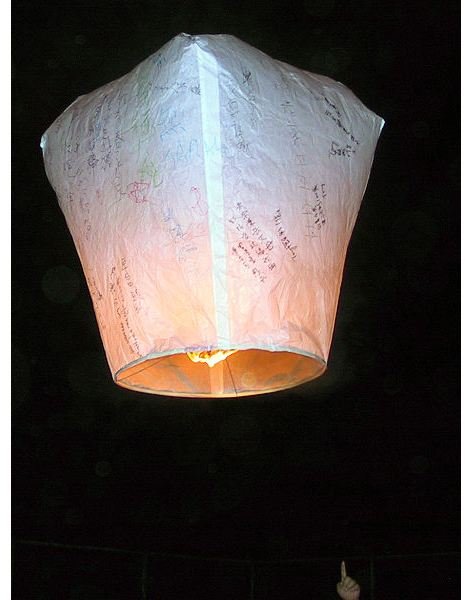History of Early Human Flight from Chinese Technology to Basic Gliders to Da Vinci and the Celebi Brothers
The Chinese Hot Air Baloon
Because we, humans, cannot fly using our own power, we have been attracted towards the idea of flight for some two millenniums. Even though the first human flight using a machine heavier than air did not occur until a century ago, there have been other attempts to fly, using kites or gliding flight as early as the 6th century CE.
The first records of flight come from ancient China.
To scare enemy troops, general Zhuge Liang (180-234 AD) installed an oil lamp under a large paper bag, and the bag floated because the lamp was heating the air. It was a primitive version of a hot air balloon, and it was used to frighten enemy troops because they thought a divine force was helping the Chinese.
This device became popular in festivals and spread along the Silk Route into Central Asia and the Middle East. A similar floating light are common in Tibetan and Indian celebrations. However there are no records to show that they were used for human flight.
According to the Comprehensive Mirror for the Aid of Government, the first human to fly was Yuan Huangtou, in 559. Huangtou, son of the erstwhile emperor of the Notrthern Wei kingdom, launched himself on a kite from a tower in the capital Ye during a succession wrangle. Records mark that he floated across the city walls and survived the landing only to be executed shortly after.
Early Gliders and Parachute
The next records of attempted flights come from the Islamic Spain during the Umayyad renaissance. In 852, Arab polymath and inventor Abbas Ibn Firmas made a set of wings with cloth stiffened by wooden struts. His device was similar toan umbrella and did no fly, but slowed his landing. This invention is now considered a prototype for the modern parachute.
In 877, the same Ibn Firnas is said to have flown using a rudimentary glider. Frinas crashed and sustained injury. Some critics attribute this accident to a lack of a tail. But his flight may have served as an inspiration for Eilmer of Malmesbury who flew for some 200 meters using a similar glider in 1010.
Da Vinci and The Celebi Brothers
Italian polymath Leonardo da Vinci designed a glider prototype that had the inner parts fixed but some control surfaces were designed towards the tips (in an effort to imitate the flight of a bird). He never flew his prototype, and there is controversy whether he could of made it fly. Based on drawings and using materials that would have been available to him, a machine constructed in the late 20th century was shown to fly. But his designs have been interpreted using modern knowledge of aerodynamic prinicples. It is discussed if his ideas could of made the machine fly. He built a model in 1496, but it did not fly and several other designs are proven to have severe flaws. This does not make da Vinci a lesser scientist and visionary than he was.
It is reported that in 1630-1632, the Ottoman Turkish polymath Hezarfen Ahmet Celebi launched from the top of the Galata Tower in Instanbul and flew for about 3 km, landing uninjured. In 1633, Hezarfen’s brother, Lagari Hasan Celebi used gunpowder to launch himself in the air. The flight was estimated to have lasted about 20 seconds and Lagari reached the maximum height of 300 meters.
For more information, check out the next article in the series where we cover the history of modern hot air balloons and zeppelins.
Image Source
Chinese Hot Air Balloon. (Supplied by Abdull at Wikimedia Commons; GNU Free Documentation License; https://upload.wikimedia.org/wikipedia/commons/9/94/SkyLanternRichy01.jpg)
This post is part of the series: The History Of Aviation
This is a series that will explain how flight evolved throughout the past century.
